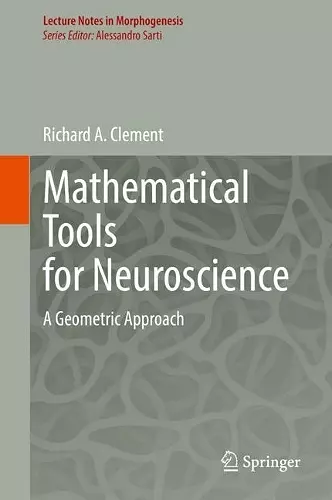Mathematical Tools for Neuroscience
A Geometric Approach
Format:Hardback
Publisher:Springer Nature Switzerland AG
Published:22nd Apr '22
Currently unavailable, and unfortunately no date known when it will be back
This hardback is available in another edition too:
- Paperback£109.99(9783030984977)

This book provides a brief but accessible introduction to a set of related, mathematical ideas that have proved useful in understanding the brain and behaviour.
If you record the eye movements of a group of people watching a riverside scene then some will look at the river, some will look at the barge by the side of the river, some will look at the people on the bridge, and so on, but if a duck takes off then everybody will look at it. How come the brain is so adept at processing such biological objects? In this book it is shown that brains are especially suited to exploiting the geometric properties of such objects.
Central to the geometric approach is the concept of a manifold, which extends the idea of a surface to many dimensions. The manifold can be specified by collections of n-dimensional data points or by the paths of a system through state space. Just as tangent planes can be used to analyse the local linear behaviour of points on a surface, so the extension to tangent spaces can be used to investigate the local linear behaviour of manifolds. The majority of the geometric techniques introduced are all about how to do things with tangent spaces.
Examples of the geometric approach to neuroscience include the analysis of colour and spatial vision measurements and the control of eye and arm movements. Additional examples are used to extend the applications of the approach and to show that it leads to new techniques for investigating neural systems. An advantage of following a geometric approach is that it is often possible to illustrate the concepts visually and all the descriptions of the examples are complemented by comprehensively captioned diagrams.
The book is intended for a reader with an interest in neuroscience who may have been introduced to calculus in the past but is not aware of the many insights obtained by a geometric approach to the brain. Appendices contain brief reviews of the required background knowledge in neuroscience and calculus.
“The monograph is exclusively professionally written and the materials are presented in an attractive way. Obviously, research in this important scientific direction can be successfully expanded with the inclusion of specialized software tools implemented in computer algebraic systems designed for scientific calculations.” (Nikolay Kyurkchiev, zbMATH 1496.92001, 2022)
ISBN: 9783030984946
Dimensions: unknown
Weight: unknown
162 pages
2022 ed.